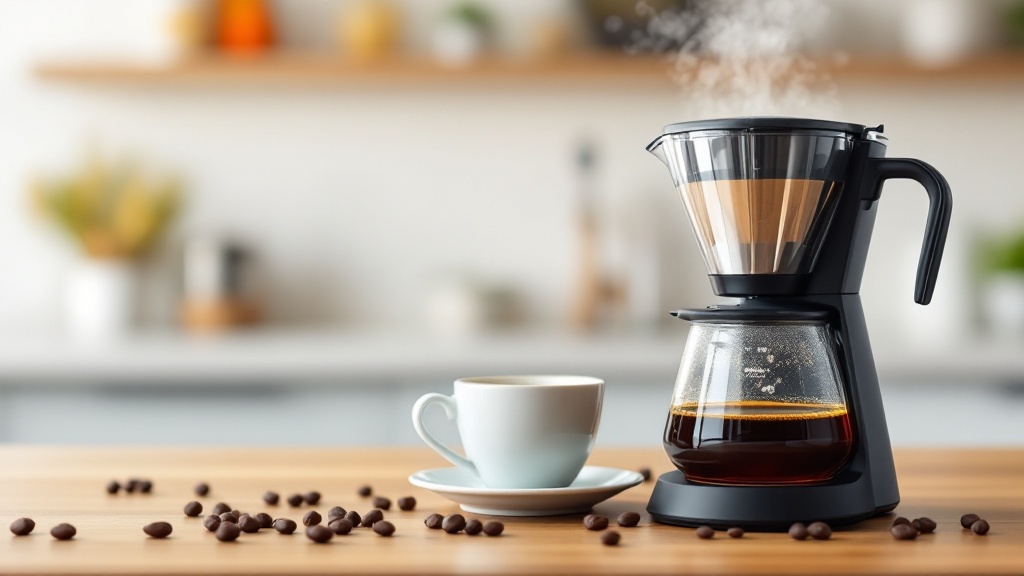
-
Overview: Achieving Drip Coffee Perfection at Home
-
Key Factors for Drip Coffee Success
-
Freshness is Key
-
Water Quality Matters
-
Temperature Precision
-
Coffee-to-Water Ratio
-
Grind Size Matters
-
Cleanliness is Crucial
-
Step-by-Step Brewing Guide
-
Tips, Variations, and Experimentation
-
Bloom Your Coffee
-
Experiment with Filters
-
Flavor Adventures
-
Iced Coffee Delight
-
Benefits of Using a Drip Coffee Maker
Brewing the Perfect Cup: Your Guide to the Best Drip Coffee Maker
Overview: Achieving Drip Coffee Perfection at Home
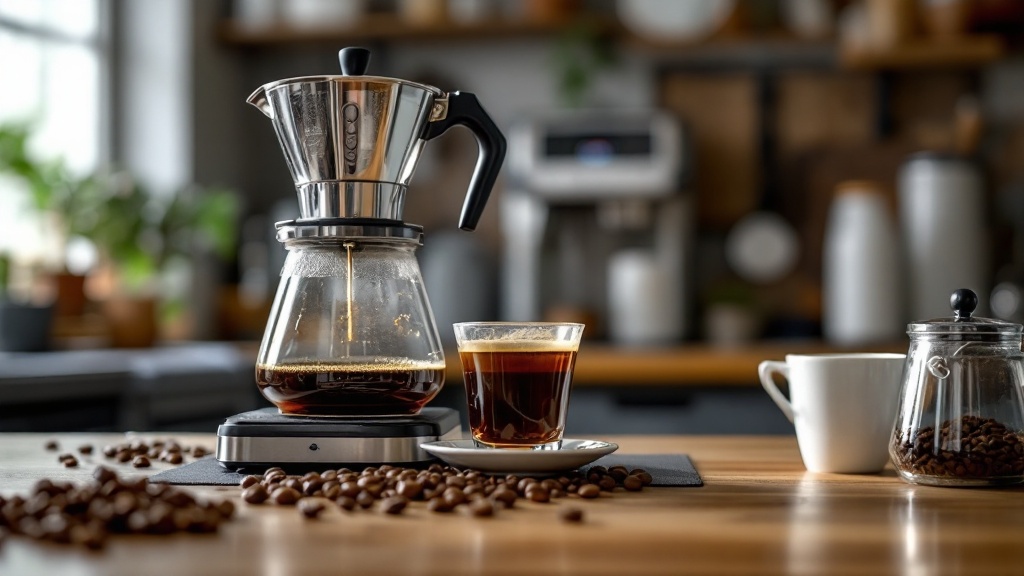
Pro Tip
**Tip:** Invest in a burr grinder for consistent coffee grounds. Uneven grind sizes can lead to over- or under-extraction, affecting flavor. Aim for a medium grind, similar to sea salt, for optimal extraction in drip coffee.
This guide dives deep into the art of making exceptional drip coffee at home. We’ll cover essential equipment, brewing techniques, and expert tips to help you consistently brew a delicious cup, every time. The key lies in understanding the importance of quality ingredients, proper brewing methods, and regular maintenance.

Optimal Drip Coffee Maker Specifications
Selecting the best drip coffee maker requires attention to specific technical specifications that directly impact brew quality. Key features include a precise water temperature control system, ideally maintaining a range between 195°F and 205°F, which is critical for optimal extraction. Machines with PID (Proportional-Integral-Derivative) controllers, such as the Technivorm Moccamaster, ensure consistent temperature regulation, preventing under-extraction or bitterness. Additionally, a high-wattage heating element (1200-1500W) is essential for rapid and uniform heating, reducing the risk of temperature fluctuations during the brewing process.
Key Features for Drip Coffee Makers
- Look for a thermal carafe to maintain coffee temperature for hours without reheating.
- Choose a model with programmable settings for automatic brewing at specific times.
- Opt for a water filtration system to enhance flavor by reducing impurities.
- Ensure a brew strength control feature for customizable coffee intensity.
- Select a machine with a pause-and-serve function to pour coffee mid-brew.
- Check for a removable filter basket for easy cleaning and maintenance.
| Aspect | Standard Drip Coffee Maker | Technivorm Moccamaster |
|---|---|---|
| Temperature Control | Basic thermostat | PID controller |
| Heating Element | Lower wattage | 1200-1500W |
| Carafe Type | Glass carafe | Thermal carafe |
| Brew Strength Control | Not available | Customizable intensity |
| Water Filtration | Optional | Built-in system |
Key Factors for Drip Coffee Success
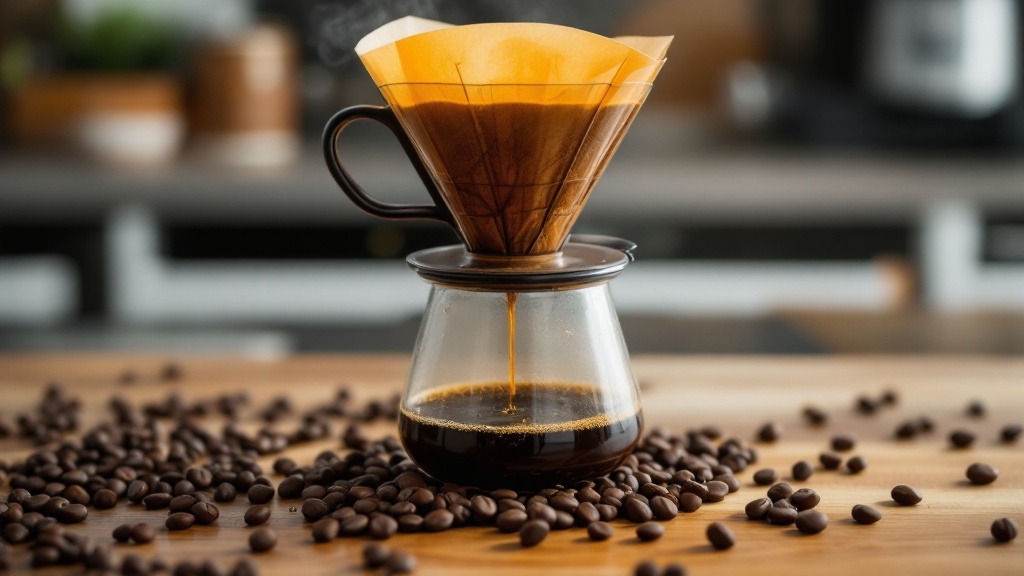
“For drip coffee success, grind fresh beans to a medium consistency–like sand–and brew at 195°F-205°F for optimal flavor extraction.”
– James Hoffmann, World Barista Champion & Coffee Expert
Expert Insight
For optimal drip coffee, water temperature is critical—aim for 195°F to 205°F. Too hot, and you risk over-extraction; too cool, and under-extraction occurs. A consistent grind size (medium-coarse) ensures even extraction, enhancing flavor balance and clarity.
| Aspect | Optimal | Suboptimal |
|---|---|---|
| Water Temperature | 195°F-205°F | Below 195°F or above 205°F |
| Grind Consistency | Medium-coarse (like sand) | Inconsistent or too fine/coarse |
| Extraction Result | Balanced flavor, clarity | Over-extraction or under-extraction |
| Bean Freshness | Freshly ground beans | Pre-ground or stale beans |
Freshness is Key
Start with freshly roasted coffee beans and grind them immediately before brewing. Pre-ground coffee loses its aroma and flavor quickly.
Maximizing Coffee Freshness
- Store coffee beans in an airtight container away from light, heat, and moisture to preserve freshness.
- Use whole beans within 2-3 weeks of roasting for optimal flavor and aroma.
- Invest in a quality burr grinder for consistent grind size, which enhances extraction and flavor.
- Grind only the amount of coffee needed for each brew to minimize exposure to air.
- Avoid freezing coffee beans, as moisture and temperature fluctuations can degrade quality.
Water Quality Matters
Use filtered or bottled water to avoid any off-flavors that could compromise the taste of your coffee. Tap water often contains minerals and chlorine that can affect the final product.
Choosing the Right Water
- Opt for water with a balanced mineral content (50-150 ppm) to enhance coffee extraction and flavor.
- Avoid distilled or overly soft water, as they can result in a flat or under-extracted brew.
- Test your tap water for impurities using a TDS (Total Dissolved Solids) meter for better control.
- Consider using spring water as a middle ground between filtered and bottled options.
- Replace water filters regularly to maintain optimal filtration and prevent buildup of contaminants.
Temperature Precision
Brewing at the ideal temperature (195°F – 205°F) ensures proper extraction of the coffee’s oils and flavors. A thermometer is highly recommended.

Optimal Brewing Temperature Tips
- Use a digital thermometer for accurate readings, as analog thermometers may have slight variations.
- Water below 195°F can result in under-extraction, leading to weak and sour coffee.
- Water above 205°F risks over-extraction, causing bitterness and burnt flavors.
- Preheat your brewing equipment to maintain consistent temperature throughout the process.
- For lighter roasts, aim for the higher end of the range (200°F-205°F) to enhance flavor complexity.
- For darker roasts, slightly lower temperatures (195°F-200°F) can prevent excessive bitterness.
Coffee-to-Water Ratio
A standard ratio is 1:17 (1 gram of coffee to 17 grams of water), or approximately 2 tablespoons of coffee per 6 ounces of water. Adjust this to your preference.
Perfecting Your Brew Ratio
- Use a kitchen scale for precise measurements, as coffee density varies by roast and grind size.
- For stronger coffee, try a 1:15 ratio (1 gram of coffee to 15 grams of water).
- For lighter coffee, experiment with a 1:18 ratio to reduce intensity.
- Cold brew typically requires a 1:8 ratio due to its extended steeping time.
- French press users often prefer a 1:12 ratio for a richer, fuller-bodied flavor.
- Adjust ratios based on bean origin-African beans may shine with a 1:16 ratio, while South American beans might suit 1:17.
Grind Size Matters
A medium grind, similar in texture to sand, works best for drip coffee makers. Too fine, and it’ll clog; too coarse, and you’ll have weak coffee.
Choosing the Right Grind
- For French press, use a coarse grind to prevent sediment in your cup.
- Espresso machines require a fine grind to achieve proper extraction and crema.
- Cold brew benefits from an extra-coarse grind for smoother, less acidic flavor.
- Adjust grind size based on brewing time: finer for shorter, coarser for longer.
- Invest in a burr grinder for consistent grind size and better coffee quality.
Cleanliness is Crucial
Regularly clean your coffee maker to prevent mineral buildup and maintain optimal flavor. Follow the manufacturer’s cleaning instructions.
Maintaining Coffee Maker Cleanliness
- Use a descaling solution monthly to remove mineral deposits and extend appliance lifespan.
- Wipe exterior surfaces daily with a damp cloth to prevent dust and grime buildup.
- Clean removable parts, like filters and carafes, after each use to avoid residue accumulation.
- Run a water-only cycle weekly to flush out any leftover coffee oils or particles.
- Check and clean the water reservoir regularly to prevent mold or bacteria growth.
- Replace water filters as recommended to ensure clean water and better-tasting coffee.
Optimal Brew Temperature Control
Maintaining a precise brewing temperature between 195°F and 205°F is critical for achieving optimal extraction in drip coffee makers. This temperature range ensures the proper dissolution of coffee solubles, including oils, acids, and aromatic compounds, which contribute to the coffee’s flavor profile. Temperatures below 195°F result in under-extraction, producing a flat and sour taste, while temperatures above 205°F can lead to over-extraction, causing bitterness and astringency. High-quality drip coffee makers, such as the Technivorm Moccamaster or the Breville Precision Brewer, are equipped with advanced heating elements and PID controllers to maintain consistent temperatures within this range.
Key Factors for Brewing Precision
- Use a high-quality thermometer to ensure accurate temperature readings within ±1°F.
- Preheat brewing equipment to maintain consistent heat during the process.
- Adjust grind size based on temperature; finer grinds for lower temps, coarser for higher.
- Monitor ambient room temperature, as it can impact brew stability.
- Experiment with temperature ranges (195°F-205°F) to find the ideal flavor profile for your beans.
- Invest in a PID-controlled kettle for precise and automated temperature adjustments.
Step-by-Step Brewing Guide
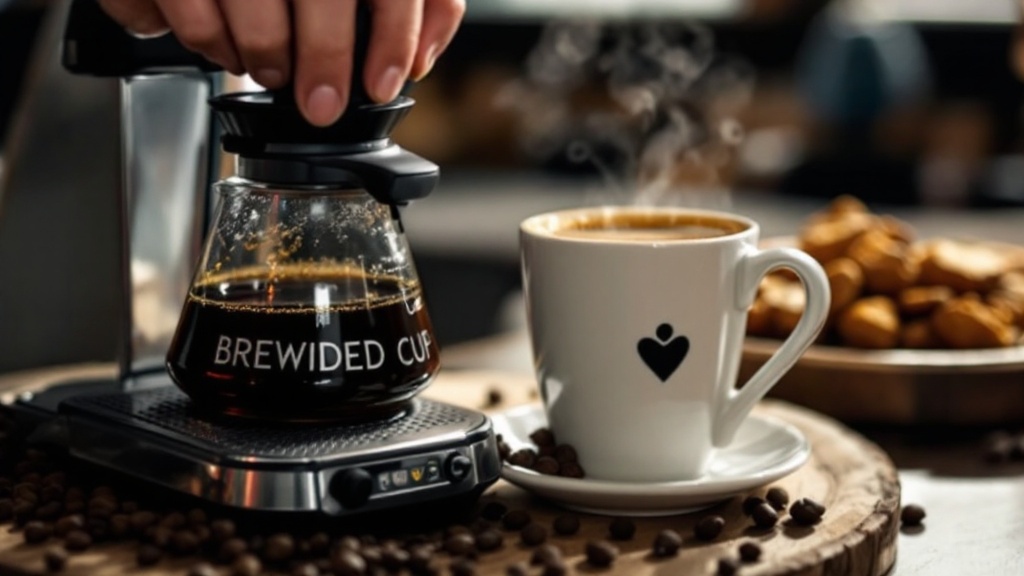
Quick Guide
1. Measure coffee and water precisely using a scale.
2. Rinse the paper filter with hot water to eliminate paper taste and preheat the brewer.
3. Evenly distribute coffee grounds in the filter for consistent extraction.
-
Measure Ingredients:
Accurately measure your coffee grounds and water using a scale for consistent results. -
Prepare the Filter:
Rinse the paper filter with hot water to remove any papery taste and preheat the coffee maker. -
Add Coffee Grounds:
Gently add the grounds to the filter, ensuring even distribution for uniform extraction. -
Add Water:
Carefully pour the filtered water into the reservoir. -
Start Brewing:
Initiate the brewing process and let the machine complete its cycle (approximately 4-5 minutes). -
Serve Immediately:
Enjoy your freshly brewed coffee for the best flavor and aroma.

Optimal Water-to-Coffee Ratio
The water-to-coffee ratio is a critical factor in achieving a balanced extraction in drip coffee brewing. For optimal results, a ratio of 1:16 (coffee to water by weight) is widely recommended. This translates to approximately 60 grams of coffee grounds per liter of water. Using a digital scale to measure both components ensures precision, as volumetric measurements can vary due to grind size and density. For example, a medium grind typically requires 10-12 grams of coffee per 180 milliliters of water, which aligns with the Specialty Coffee Association’s (SCA) brewing standards.
Ideal Brewing Ratios Explained
- For drip coffee, aim for a 1:15 to 1:17 ratio (1 gram of coffee to 15-17 grams of water).
- Espresso typically uses a 1:2 ratio (1 gram of coffee to 2 grams of water) for a concentrated shot.
- French press brewing works best with a 1:12 ratio for a richer, fuller-bodied cup.
- Cold brew requires a higher coffee concentration, often a 1:8 ratio, due to its extended steeping time.
- Adjust ratios slightly based on personal taste preferences, such as a 1:16 ratio for a lighter brew.
Tips, Variations, and Experimentation
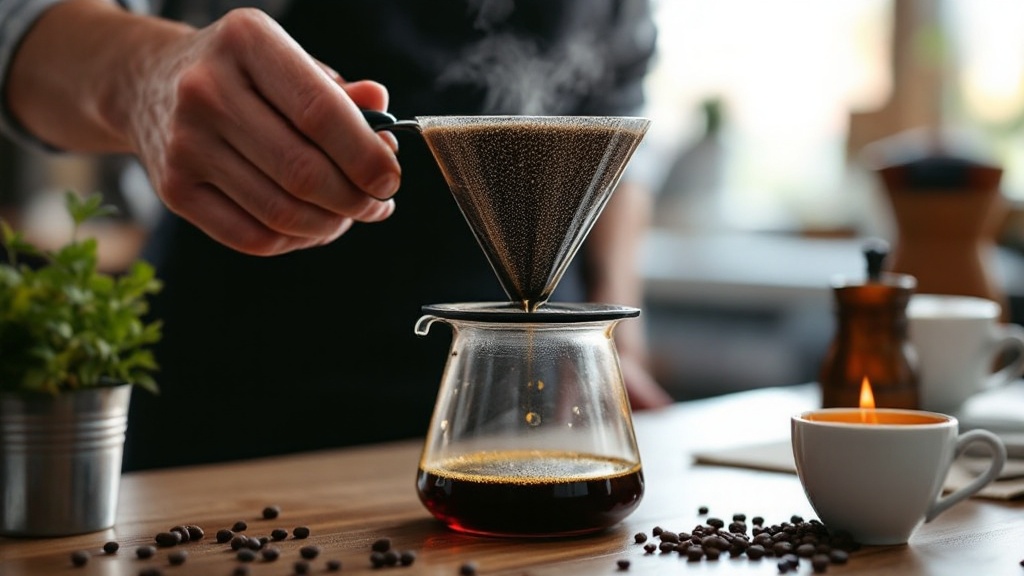
“Blooming your coffee unlocks hidden flavors–pre-wet grounds for 30 seconds to release trapped gases and elevate your brew.”
– James Hoffmann, World Barista Champion & Coffee Expert
Pro Tip
**Pro Tip:** For a richer bloom, experiment with water temperature and bloom time. Start with 195°F and 30 seconds, then adjust in 5°F increments or extend bloom time by 10 seconds to fine-tune flavor extraction.
Bloom Your Coffee
For enhanced flavor, pre-wet the grounds with hot water for 30 seconds before starting the brewing cycle. This “bloom” releases trapped gases and aromas.
Mastering the Coffee Bloom
- Use water heated to 195-205°F for optimal blooming, as it extracts flavors without scalding the grounds.
- Adjust the bloom time based on roast level: 30 seconds for light roasts, 20-25 seconds for dark roasts.
- Stir the bloom gently to ensure even saturation and gas release for a more balanced brew.
- Freshly ground coffee blooms more effectively due to higher gas content, enhancing aroma and flavor.
- For pour-over methods, pour water in a slow spiral motion to evenly wet all grounds during the bloom.
Experiment with Filters
Paper filters yield a cleaner cup, while metal filters allow more oils through, resulting in a bolder, richer taste.
Filter Types and Brewing Impact
- Cloth filters, often reusable, balance cleanliness and oil retention, offering a middle ground between paper and metal.
- Paper filters are biodegradable, making them an eco-friendly choice for environmentally conscious brewers.
- Metal filters, typically stainless steel, are durable and cost-effective over time due to their reusability.
- Filters with finer meshes reduce sediment in the cup, enhancing clarity and mouthfeel.
- Some specialty filters, like gold-plated ones, claim to preserve delicate flavor notes better than standard options.
Flavor Adventures
Add spices like cinnamon or vanilla extract to the grounds before brewing for unique flavor profiles. Experiment to find your favorites!
Enhancing Coffee with Spices
- Try adding cardamom for a warm, slightly citrusy flavor that pairs well with medium roasts.
- Infuse nutmeg into your grounds for a subtle, earthy sweetness perfect for dark roasts.
- Experiment with ginger for a spicy kick that complements bold, robust coffee blends.
- Use cocoa powder for a rich, chocolatey twist that enhances mocha-inspired brews.
- Combine star anise with cinnamon for a complex, aromatic flavor profile.
- Add a pinch of chili powder for a surprising, fiery note in your morning cup.
Iced Coffee Delight
Brew your coffee as usual, then pour it over ice for a refreshing iced coffee.
Perfecting Iced Coffee
- Use cold brew coffee for a smoother, less acidic flavor compared to hot-brewed coffee.
- Add a splash of milk, cream, or a dairy-free alternative like almond or oat milk for richness.
- Sweeten with simple syrup, honey, or flavored syrups (e.g., vanilla or caramel) for a customizable taste.
- Experiment with coffee ice cubes to prevent dilution as they melt.
- Garnish with a sprinkle of cinnamon, cocoa powder, or whipped cream for an extra touch.
Optimizing Coffee Bloom Technique
The coffee bloom, a critical step in drip coffee preparation, involves pre-wetting the coffee grounds with hot water for approximately 30 seconds before initiating the full brewing cycle. This process allows trapped carbon dioxide, a byproduct of the roasting process, to escape from the grounds. The release of CO2 is essential as it prevents the gas from interfering with water contact during brewing, ensuring even extraction and maximizing flavor potential. Optimal water temperature for blooming ranges between 195°F and 205°F, as this range facilitates efficient gas release without scalding the grounds.
Mastering Coffee Bloom Basics
- Use freshly ground coffee for optimal CO2 release during blooming.
- Ensure water temperature is between 195°F and 205°F for effective extraction.
- Pour water in a circular motion to evenly saturate the coffee grounds.
- Allow the bloom to sit for 30-45 seconds to release trapped gases.
- Adjust bloom time based on roast level: lighter roasts may require longer blooms.
- Experiment with water-to-coffee ratios (e.g., 2:1) to enhance flavor complexity.
Benefits of Using a Drip Coffee Maker
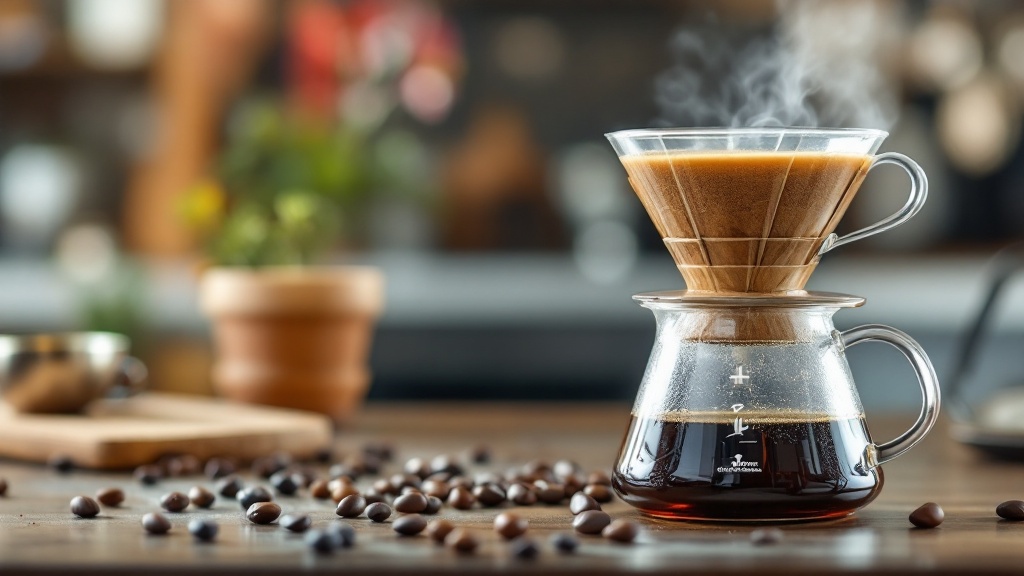
Expert Insight
Drip coffee makers excel in preserving coffee’s nuanced flavors by maintaining optimal brewing temperatures (195-205°F), ensuring consistent extraction. Their programmable features allow precise control over brew strength and timing, enhancing both convenience and quality for a tailored coffee experience.
Drip coffee makers offer convenience, consistency, affordability, customizability, and versatility, making them an ideal choice for coffee lovers of all levels.

This comprehensive guide empowers you to brew exceptional drip coffee at home. Enjoy the journey of experimenting and perfecting your brewing techniques!
Optimal Water Temperature Control
One of the most critical technical aspects of a drip coffee maker is its ability to maintain optimal water temperature during the brewing process. The Specialty Coffee Association (SCA) recommends a water temperature range of 195°F to 205°F (90°C to 96°C) for ideal extraction. High-quality drip coffee makers, such as the Technivorm Moccamaster, are engineered with precision heating elements and thermal carafes to ensure water remains within this range throughout the brewing cycle. This consistency prevents under-extraction, which results in weak, sour coffee, and over-extraction, which can lead to bitter, astringent flavors.
Ideal Temperature Ranges
- Maintain 68-74°F for freshwater aquariums to support most tropical fish species.
- Set saltwater tanks to 75-80°F for coral health and marine life vitality.
- Use a reliable aquarium heater with a built-in thermostat for precise control.
- Monitor temperature fluctuations daily, especially during seasonal changes.
- Install a backup thermometer to ensure accuracy and prevent equipment failure risks.
- Avoid sudden temperature shifts, as they can stress aquatic organisms and disrupt ecosystems.
Conclusion
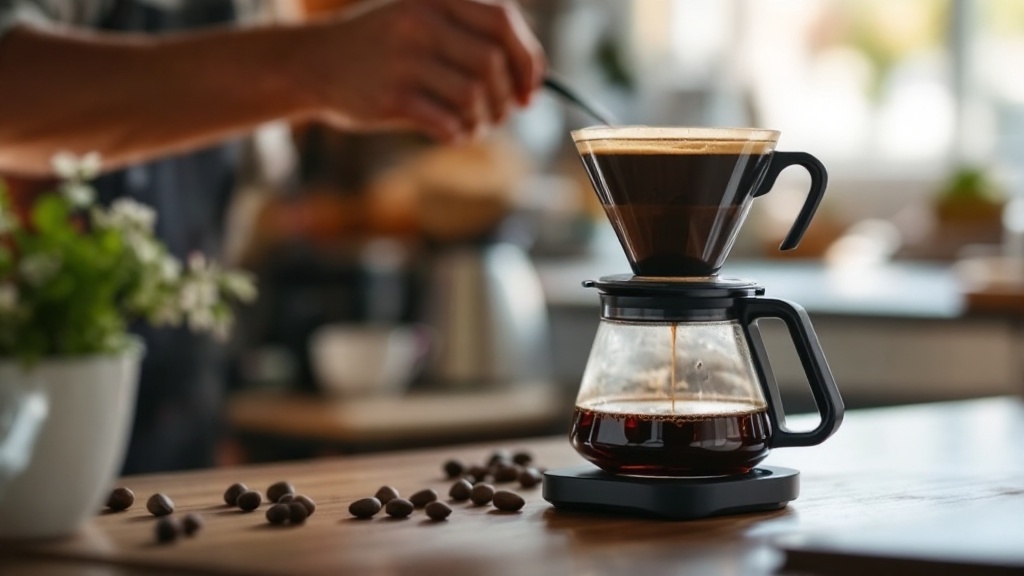
Quick Guide
Mastering drip coffee at home requires fresh beans, proper grind size, water at 195°F-205°F, and a 1:17 coffee-to-water ratio. With these essentials, you can consistently brew a high-quality cup. Invest in the right tools for best results.
Brewing the perfect cup of drip coffee at home is achievable with the right knowledge and equipment. This guide highlighted the critical factors influencing coffee quality: using freshly roasted beans, employing the correct grind size, maintaining optimal water temperature (195°F-205°F), and adhering to a precise coffee-to-water ratio (e.g., 1:17). Investing in a drip coffee maker with features like PID temperature control and a high-wattage heating element significantly improves consistency and allows for greater precision in achieving the perfect brew. Remember, even small details like blooming your grounds and regularly cleaning your machine contribute to the overall quality of your final cup.
Beyond the technical specifications, the art of drip coffee lies in experimentation and personal preference. Don’t be afraid to adjust the coffee-to-water ratio, try different grind sizes, explore various brewing temperatures, and even add spices or experiment with different filters to find your ideal flavor profile. The journey to your perfect cup is as rewarding as the taste itself.
Now that you’re armed with the knowledge and techniques to brew exceptional drip coffee, it’s time to put your skills to the test! Gather your equipment, select your favorite beans, and embark on your coffee brewing adventure. Enjoy the rich aroma and satisfying taste of a perfectly crafted cup, made just for you. Happy brewing!

